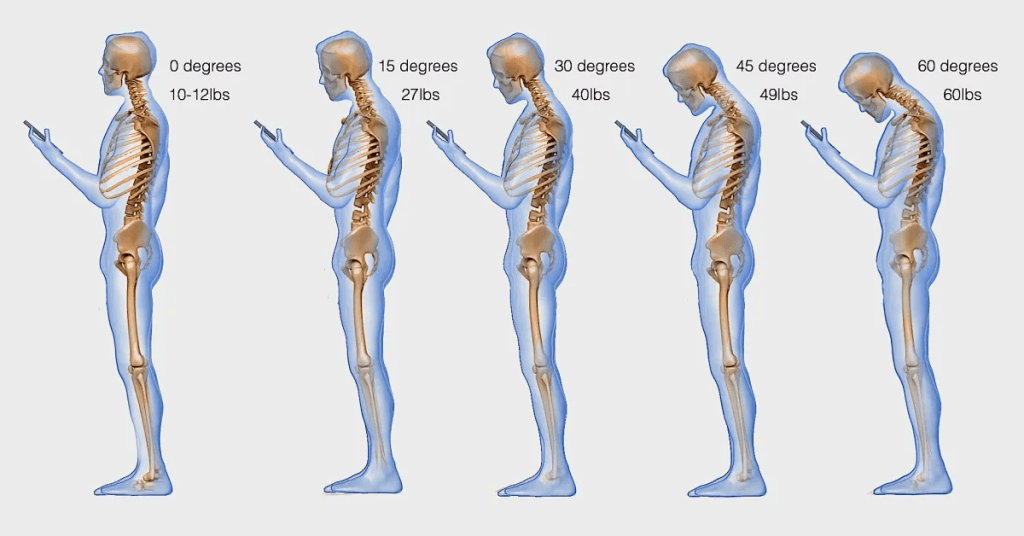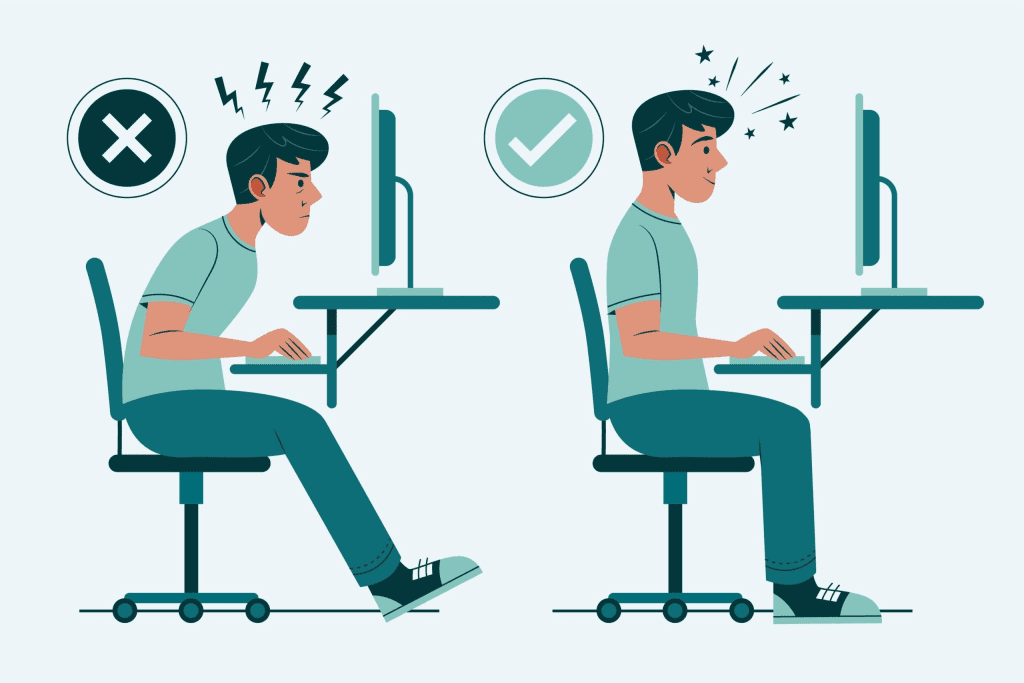In today’s digital age, most of us can’t imagine life without our smartphones. However, while these devices offer a wealth of convenience and entertainment, they can also be wreaking havoc on our health, particularly our spine. Mr. John, a 38-year-old man, learned this the hard way when he developed severe neck pain, a hunched neck, and limb weakness after years of excessive phone use. His condition, which required surgery, highlights a growing concern among younger people—the damaging effects of excessive phone use on the cervical spine.
The Link Between Phone Use and Cervical Spine Damage

Many people, especially younger adults, spend several hours each day hunched over their phones, often unaware of the damage they’re causing to their spine. According to Dr. Smith, an orthopedic specialist, frequent phone use, particularly the habit of tilting the head forward to look at a screen, can lead to significant damage to the cervical vertebrae. This behavior increases the pressure on the cervical region, leading to problems like disc herniation, nerve compression, and spinal degeneration.
How Excessive Phone Use Affects the Spine
The human head weighs approximately 4-5 kg. However, when you tilt your head forward to look at a screen, the pressure on the cervical spine can increase to up to 27 kg. This excessive weight on the neck causes the natural curve of the cervical spine to collapse, leading to pain, inflammation, and herniated discs. Over time, this leads to serious spinal issues, including the formation of bone spurs and damage to the spinal cord.
Mr. John’s Case: Severe Cervical Disc Herniation
Mr. John’s story illustrates the dangers of neglecting spinal health. After years of heavy phone use, Mr. John started to experience intense neck pain, weakness in his limbs, and a noticeable hunched posture. An MRI scan revealed that he had three herniated discs in his cervical spine (from C3 to C7) and nerve compression at C5 and C6 vertebrae. Additionally, his lumbar spine was also affected, with herniated discs at the L4 and L5 levels.
Video : Cervical Nerves vs Vertebrae
Symptoms and the Impact on Daily Life
Mr. John’s symptoms were not only painful but also debilitating. He found it difficult to perform basic tasks such as lifting heavy objects, buttoning a shirt, or holding chopsticks. His condition worsened over time, and the pain extended to his shoulders and back. Nerve compression led to weakness in his limbs, significantly affecting his mobility and quality of life.
The Surgical Solution: Cervical Spine Fusion
After a thorough diagnosis, Mr. John was advised to undergo cervical spine fusion surgery to treat the herniated discs and alleviate the nerve compression. The surgery was carefully planned and involved the removal of damaged bone spurs and discs from the cervical region. The surgeon fused the affected vertebrae using anterior approach surgery, which helps preserve the muscles and ligaments at the back of the spine.
Surgical Procedure and Recovery
The surgery, which lasted 2.5 hours, involved inserting eight screws into the spine to stabilize the vertebrae. Post-surgery, Mr. John experienced significant improvement in his condition, with about 90% pain reduction on the first day. His mobility and muscle strength improved remarkably, and his back and leg pain decreased significantly.
Dr. Smith emphasized that, while Mr. John’s recovery was promising, the next three months would be crucial for bone healing. Additionally, Mr. John would need ongoing physical therapy and medication to ensure the proper recovery of his spine.
Preventing Further Damage: Lifestyle and Ergonomics

Mr. John’s case highlights the importance of prevention when it comes to spine health, particularly for those who spend extended hours on their phones. Dr. Smith suggests a few simple habits that can drastically reduce the risk of cervical spine damage.
1. Keep the Phone at Eye Level
When using your phone, keep it at eye level to avoid tilting your head forward. This simple adjustment can significantly reduce the strain on your neck and prevent unnecessary pressure on your cervical spine.
2. Take Frequent Breaks
Dr. Smith recommends taking breaks every 15-30 minutes while using your phone. These short breaks help reduce the continuous pressure on your spine and give your muscles a chance to relax.
3. Perform Neck and Finger Stretching Exercises
Incorporate neck stretches and finger exercises into your routine. Stretching can help alleviate muscle tension and prevent stiffness in the neck and shoulders caused by prolonged phone use.
The Importance of Maintaining Good Posture
Video :

Maintaining good posture, whether you’re using a smartphone or sitting at a desk, is critical for spine health. Proper posture ensures that your spine remains in alignment, reducing the risk of strain and injury. If you’re prone to sitting or using devices for extended periods, consider ergonomic furniture and tools that encourage proper posture.
The Takeaway: Protecting Your Cervical Spine
Mr. John’s experience serves as a crucial reminder of the dangers of excessive phone use and poor posture. The cervical spine is particularly vulnerable to damage, and the consequences of ignoring these issues can be severe. By adopting better habits, such as keeping your phone at eye level, taking regular breaks, and practicing good posture, you can significantly reduce your risk of cervical spine damage and related conditions.
Remember, your spine health is in your hands. Being proactive in protecting your spine today will prevent more serious issues in the future. If you’re experiencing neck pain or discomfort, don’t ignore it—consult a healthcare professional to get the proper diagnosis and treatment before the problem escalates. Spinal health is key to overall well-being, and making small adjustments in your daily habits can make all the difference.


